- Home
- Neil Gaiman
Psychos
Psychos Read online
PSYCHOS
SERIAL KILLERS, DEPRAVED MADMEN, AND THE CRIMINALLY INSANE
EDITED WITH COMMENTARY BY
JOHN SKIPP
NEW YORK TIMES BESTSELLING AUTHOR
Table of Contents
Introduction: Our Brain: The Monster of Choice, When There’s No One Else Left to Blame
JOHN SKIPP
Classical Scenes of Farewell
JIM SHEPARD
Hop-Frog
EDGAR ALLAN POE
Marmalade Wine
JOAN AIKEN
The Most Dangerous Game
RICHARD CONNELL
The Small Assassin
RAY BRADBURY
Lucy Comes to Stay
ROBERT BLOCH
Marla’s Eyes
ED KURTZ
The Liar
LAURA LEE BAHR
The Paperhanger
WILLIAM GAY
Red Dragon
THOMAS HARRIS
The Exit at Toledo Blade Boulevard
JACK KETCHUM
Incident On and Off a Mountain Road
JOE R. LANSDALE
Murder for Beginners
MERCEDES M. YARDLEY
Jesse
STEVE RASNIC TEM
In for a Penny
LAWRENCE BLOCK
Now Hold Still
DAVID J. SCHOW
Feminine Endings
NEIL GAIMAN
Going Solo
LEAH MANN
Death-in-Life Love Song
KEVIN L. DONIHE
Ralph and Jerry
LESLIANNE WILDER
And What Did You See in the World?
NORMAN PARTRIDGE
Life with Father
BENTLEY LITTLE
The Shallow End of the Pool
ADAM-TROY CASTRO
Mommy Picks Me Up at Day Care
JOHN GORUMBA
When the Zoos Close Down, They’ll Come for Us
VIOLET LAVOIT
All Through the House
CHRISTOPHER COAKE
Intruder
JOHN BODEN
Straycation
SCOTT BRADLEY AND PETER GIGLIO
Life Coach
CODY GOODFELLOW
Righteous
WESTON OCHSE
The Meaning of Life
AMELIA BEAMER
Damaged Goods
ELIZABETH MASSIE
Willow Tests Well
NICK MAMATAS
Serenity Now
SIMON McCAFFERY
The Mannerly Man
MEHITOBEL WILSON
Sensible Violence
BRIAN HODGE
Bucky Goes to Church
ROBERT DEVEREAUX
At Eventide
KATHE KOJA
Afterword: Psychos and You!
JOHN SKIPP
Appendix A: A Devil in My View: Psychos in Popular Culture
CODY GOODFELLOW
Appendix B: The Albert Fish Letter
Acknowledgements
About the Author
Our Brain: The Monster of Choice, When There’s No One Else Left to Blame
A CHEERFUL INTRODUCTION BY JOHN SKIPP
The world is a comedy to those that think; a tragedy to those that feel.
—Horace Walpole (1717–1797)
This just in: SOME PEOPLE KILL PEOPLE! It’s the hideous headline heard daily, ‘round the world.
As it turns out, we do it quite a bit: every sixty seconds, in the USA alone, according to the latest statistics. The global guesstimates must be even more impressive.
Which means that, in the time it takes me to write this sentence, at least one somebody is killing somebody else, somewhere on Earth. Probably a hell of a lot more.
And in the time it takes you to read this sentence—six months to a hundred years after I wrote it—those odds have probably only gone up.
And you thought math wasn’t gonna come in handy!
Lemme tell ya: this world can make you crazy, if you weren’t already. And if there’s one thing I hope we’ve all figured out by now, it’s that we’re all at least a little bit insane. Prone to thoughts we probably shouldn’t have. Occasionally impelled toward some really bad ideas.
It’s a relative thing, of course, ranging from harmless oddball activities like collecting stamps all the way to, you know, harvesting skulls. There’s a lot of idiosyncratic leeway in between, which is where most of us live out lives of either (a) quiet, secretive desperation or (b) noisily in-your-face acting-out. Depending on our personal style and symptomology.
But most of us can agree that there’s a pretty clear line somewhere between “acceptable” crazy—eccentric, obnoxious, slightly off, kinda spooky—and genuinely terrifying, murderous madness. The kind that tears holes in our lives. And makes us so deeply afraid of each other.
That’s where this book differs from our previous supernatural anthologies—Demons, Zombies, and Werewolves and Shapeshifters—David J. Skal’s Vampires, and Hans Holzer’s nonfiction Ghosts and Witches volumes.
Ask anybody what they’re most afraid of in this world. The answer is not likely to be vampires, werewolves, or zombies (which most people don’t believe in), or ghosts, witches, and demons (which many people do).
For most folks, the monster of choice is other people.
Because other people are scary. You don’t know what they’re going to do. They may seem nice. They may seem friendly. They may seem like they’re going to do what any other nice, friendly person would do. Like you would do, if you were nice and friendly.
But maybe they won’t.
If it turns out that they are not nice, friendly people, then the horrible truth is that you might wind up in a real-life nightmare world of shit almost beyond imagining. Just by rubbing up next to them, in the wrong place, at the wrong time. At a grocery store. In the ATM line. In traffic. At your place of business. Or even at home, among your own.
And the closer you get to them, the more you find out.
Whether you want to or not.
It is this ultrathin line that we’ll be crossing throughout the extraordinary work that follows: a staggering thirty-eight-course banquet of literary mania and mayhem, served up by some of the most amazingly astute, deeply disturbing, immensely entertaining chroniclers of crazy ever to grace the printed page.
So let’s try to set up our terms, real quick, before we descend into the misfiring brainmeat of the matter.
Psychosis is an only-slightly-more-precise word than madness, given all the factors that play into it, and the incredibly personal nature of the experience. It’s a universe of chemical/historical/experiential variables, which scientists are deciphering as we speak. With a very long way to go.
The richly schizoid, hallucinatory varieties are the easiest to spot, by and large, because they tend to drive other people away with their disassociative weirdness and inability to fit in. That is, unless they’re also wildly charismatic, form a cult or other familial grouping, find a nice remote location, and multiply unseen. (Or just multiply the madness inside their own heads, alone, wherever “home” may be.) Our asylums are packed with these ladies and gents. But you’d be stunned by how many run loose.
And then there are those otherwise-normal folk driven over the edge by circumstance. A horrific encounter or, a tragic loss, might be the straw that breaks the camel’s back, ultimately snapping the spine of sanity. Post-Traumatic Stress Disorder is woefully real, and nothing to sneeze at, no matter how strong you are, as we’re finally coming to understand.
In a war zone, pretty much everyone has it, from soldiers to civilians to their animals and plants. War is horror on a grand scale—Hell on Earth, unleashed—and no one who’s been through it comes out unscathed.
&nb
sp; If you live in a rough-enough neighborhood, the same principle applies. Constant street-level threat weighs heavy on the human soul. Fear wears us down. And even in the nicest parts of town or country, it only takes one sufficiently terrifying violent encounter to yank our sense of security out from under us, and let the dark thoughts in.
Most of us somehow find a way to weather it. Some even thrive and blossom in adversity. Find themselves. Become an inspiration to others.
Some of us just can’t. We snap. It’s too much.
And then more of the tragic bad things happen.
But the bulk of the one out of every one hundred of us who are arguably psychotic—according to the latest pop science projections—are functioning members of society. Many with high-paying, power-intensive jobs. (A 2012 study suggests that one out of ten high-powered CEOs meet the psycho test. Living in Hollywood, I suspect the number might be higher.)
Whether these numbers are nonsense or nailing it, they say something profound and intense about our current level of relative sanity.
Functioning psychosis—which is to say, the psychosis that interacts with us, day by day—is largely characterized by lack of empathy: the inability to feel or care about others. This enables psychotics to move through the world without the burden of sympathy or conscience, indifferent to moral codes that make no sense to them.
To psychotics, morals and empathy just seem like a big load of hooey: meaningless, stupid obstacles between themselves and whatever they might hope to achieve. This is the mind-set that allows a person to ruthlessly step on others, treat them like shit, and kill them if necessary or otherwise exciting.
The other side of the problem, of course, is feeling too much. That’s where crimes of passion kick in, and all that latent crazy goes to town.
But for most psychotics, it’s thinking too much. Thinking and thinking. And, the sad truth be told, being smart is no defense against madness. Sometimes smart doesn’t help much at all.
Obviously, you don’t have to be smart to kill people. Any lunkhead can do it. Henry Lee Lucas was dumb as a post. Ed Gein wasn’t real sharp, either. And don’t even get me started on John Wayne Gacy.
But Hannibal Lecter—the Dr. Moriarty of modern madness at its highest and most nightmarishly evolved—very clearly suggests that even genius is no defense. It just ups the voltage on crazy, makes it weirdly more impressive and sustained.
Till you finally get caught. Which you very well might. Unless you’re a CEO, or a major political figure, or some other kind of above-the-law superstar. Or otherwise extremely cunning and lucky.
But even that might not be enough to keep your world from caving in.
Which brings us to the ultimate, terrible truth.
There is no escape from the horror of horror. However it’s explained, justified, or exposed, it’s still fucking horrific, and that’s all there is to it.
For most of us—no matter how dark our impulses—it’s one thing to imagine them. It’s another to act them out. The difference is clear, because the difference has consequences.
Horror—and crime, and mystery, and suspense, and all the other literary forms that evoke that emotion—are fictions of consequences. They lay out scenarios. They postulate what-ifs. They flood us with streams of experiential gnosis in which we are the ones thinking, feeling, experiencing.
When it’s happening to you, it’s a whole ‘nother story.
And that’s why these stories are so astounding.
Because they take you inside every side of the nightmare moment, from the killer to the knife to the victim to the people who were otherwise affected by the act: because they saw, because they cared, or because they just, unfortunately, shared the same world.
For this book—in some ways, more than any other—my excellent editor Dinah Dunn and I put an extremely high premium on psychological acuity. Which meant that honesty was our highest priority, right next to talent, vision, and skill. It wasn’t enough to just tell a good story. And enormous as this volume turned out to be, we still only had so many pages.
That’s why it pains me to say that we could easily have filled two books this size with incredibly great stories, with some left over, most of which could easily sell to any other astute editor.
In the end, our job was to bring the most comprehensive, wide-ranging cornucopia of mind-shatteringly kick-ass fiction we could gather, by some of the finest writers ever to spelunk this treacherous territory. Descend into this black hole of the soul.
You may notice an uncharacteristic shortage of “vintage” classics in this assemblage. That’s largely because I honestly feel that better short psychological fiction is being written now—particularly as pertains to honest depictions of madness—than in the hallowed days of yore, when you had to be some kind of monster to even think such things. (More on the history of the literature, and the mind-sets that framed it, in the appendices that follow.)
In a weird way, I see this book as the flipside of our last volume, Demons, wherein supernatural forces helped abstract and mythologize just how crazy we can get, and made that bitter pill somewhat easier to swallow. You know. The devil made me do it! Or I turned into a werewolf, or something!
This time, however, we’re on our own. It’s just us and our crazy brains. Thinking thoughts we probably shouldn’t. Coming to grips, as best we can.
Or succumbing to the tidal wave of psychosis.
And laying waste to all we love.
We are our own demons, yes. And each other’s. Cuz people are scary. But as the great Lord Buckley said, “Angels got wings because they take themselves lightly.”
So hang onto your heart and your wits and your wings. Believe me, you are going to need them. A pitch-black sense of humor will also come in handy.
In the end, I suspect true sanity lies in making peace with all the painful insanity that is so much a part of our human heritage. Facing it down, without letting it win. Seeing it for what it is. And then saying, “No, thank you.”
The real war—the eternal one—is the battle against the madness within ourselves. Don’t ever forget it.
Everything else, from patriotism on down to the most intimate one-on-one, is just a costume we drape over that central conflict. Finding excuses to let our inner monster run free. Or finding opportunities to tame and rein them in.
I hope these stories provoke you, in the very best way, to remember what it is to be a human being. Through the laughter and tears.
Now enjoy, you crazy bastard!
Classical Scenes of Farewell
BY JIM SHEPARD
People often tend to think of serial killing as a modern phenomenon, the term having only been coined as recently as the 1980s, when the escalating trend of death-crazed media darlings (Bundy, Gacy, et al.) made such snappy buzzwords commonplace nomenclature. But, of course, nothing could be further from the truth.
Case in point: a good four hundred years before Jack the Ripper became the first pop star of nocturnal disembowelment—carving up streetwalkers and spreading panic through the cobblestoned Whitechapel of 1888—there was Gilles de Rais.
Here was a man of noble roots, epic contradictions, and monstrous compulsions, whose horrors played out on such a grand, historic scale of war, perversion, class disparity, religious hypocrisy, and power-gone-mad that it’s hard to believe Shakespeare didn’t invent him.
And so we begin with Jim Shepard’s tragic, immaculately rendered inside account of a life spent complicit with a fifteenth-century devil made flesh, its implications rumbling through our culture to this day.
As a child who could barely hold myself upright without tottering, I was steeped in my mother’s belief that our tumbledown farm was serried about and tumid with devils. In my mind’s eye they stood in a ring and clasped one another’s taloned hands and leered in at me while I slept. My fourth summer was the year that Sophie, the stonemason’s daughter, was seized with a helplessness in her limbs until her father conceded her diabolic possession and
took her to the Church of Our Savior, where the priest found five devils residing inside her, whose names were Wolf, Lark, Dog, Jolly, and Griffin. The devils confessed they’d conjured hailstones through her by beating the surface of well water with her hands and that they’d additionally concocted the tinctures and ointments she’d used to blight her neighbors’ apple trees. They said they’d requested, and been denied, a special grease that would have turned her into a werewolf. When asked of whom they’d made their appeal, they said only “The Master.”
When I was twelve, the man from whom we rented our pastureland—a lifelong bachelor whose endless mutterings were his way of negotiating his solitude, and whose imagination extended only to business; the sort who milled his rye without sifting it, so it might last longer—was found in the middle of our lane one winter morning, naked, his feet and lips blue. He said a demon had appeared to him on a pile of wood under his mulberry tree, in the likeness of a corpulent black cat belonging to the house next door. With its front paws the cat had gripped him by the shoulders and pushed him down, and then had fastened its muzzle on the man’s mouth and would not be denied. The man claimed that for nearly an hour he’d remained that way, swooning, speechless, and open to the cat’s searching jaws, unable to make even the Sign of the Cross and powerless to diminish the urgings of its tongue. He had no memory of where his clothes had gone, or how he’d ended up in the lane.
My mother had long since taken to enfolding a crucifix in the bedcovers when she turned down my poor linens for the night. My chamber was in our barn’s loft, attached to the back of the house, and from this, the highest point on the hill, I could view the Delorts’ farm to the west. Their daughter, Katherine, was the continual object of my confused nightly agitations as well as the focus of my joy.
And then one sunstruck August afternoon when we were passing through the village, my mother and I investigated a disturbance on the church steps, a crowd squabbling over who had sufficient schooling to interpret the document posted on the doors before them. A sacristan emerged to provide assistance and to read aloud what he declared to be a juridical confession lately obtained through the harrowing of some of our neighbors. Said neighbors had been identified to the ecclesiastical investigators by other neighbors.

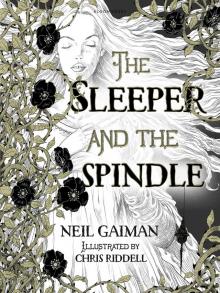 The Sleeper and the Spindle
The Sleeper and the Spindle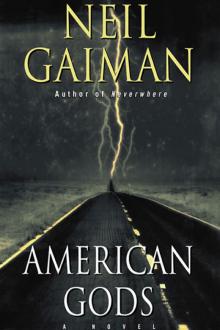 American Gods
American Gods Coraline
Coraline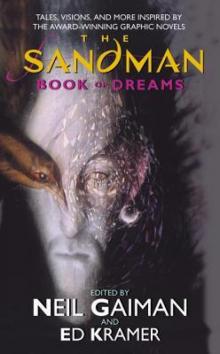 The Sandman: Book of Dreams
The Sandman: Book of Dreams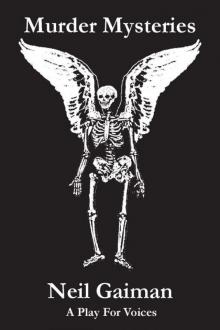 Murder Mysteries
Murder Mysteries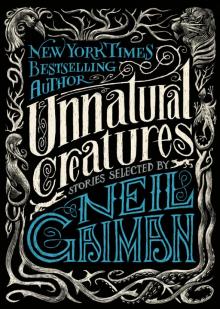 Unnatural Creatures
Unnatural Creatures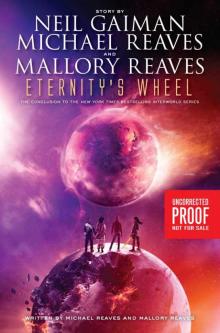 Eternity's Wheel
Eternity's Wheel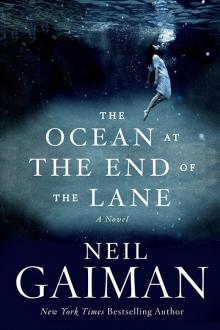 The Ocean at the End of the Lane
The Ocean at the End of the Lane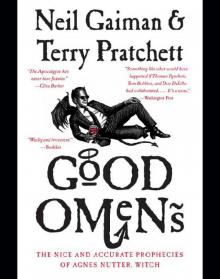 Good Omens
Good Omens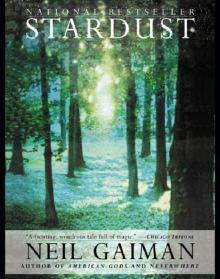 Stardust
Stardust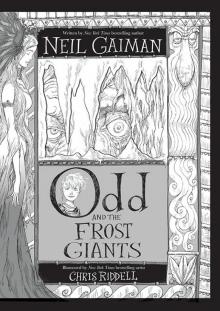 Odd and the Frost Giants
Odd and the Frost Giants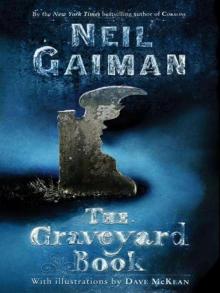 The Graveyard Book
The Graveyard Book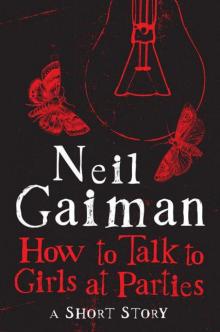 How to Talk to Girls at Parties
How to Talk to Girls at Parties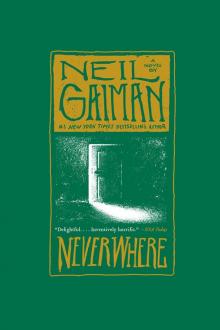 Neverwhere
Neverwhere Snow, Glass, Apples
Snow, Glass, Apples Anansi Boys
Anansi Boys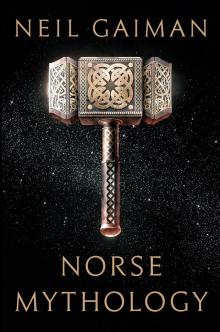 Norse Mythology
Norse Mythology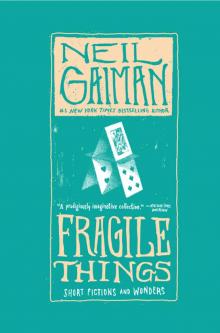 Fragile Things: Short Fictions and Wonders
Fragile Things: Short Fictions and Wonders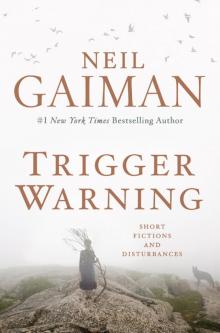 Trigger Warning: Short Fictions and Disturbances
Trigger Warning: Short Fictions and Disturbances InterWorld
InterWorld The Monarch of the Glen
The Monarch of the Glen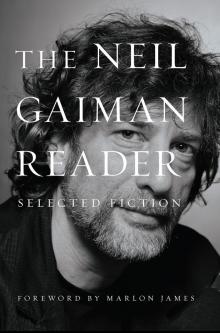 The Neil Gaiman Reader
The Neil Gaiman Reader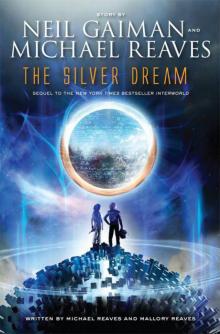 The Silver Dream
The Silver Dream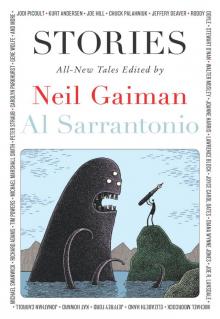 Stories
Stories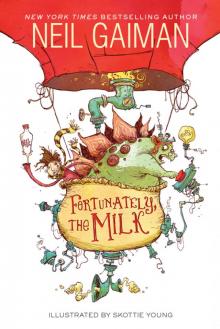 Fortunately, the Milk
Fortunately, the Milk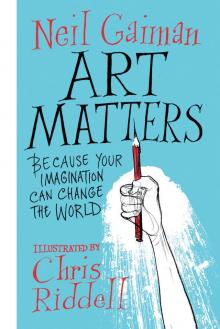 Art Matters
Art Matters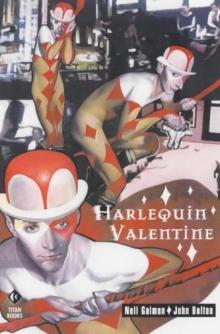 Harlequin Valentine
Harlequin Valentine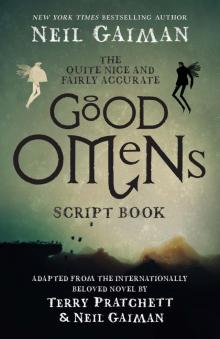 The Quite Nice and Fairly Accurate Good Omens Script Book
The Quite Nice and Fairly Accurate Good Omens Script Book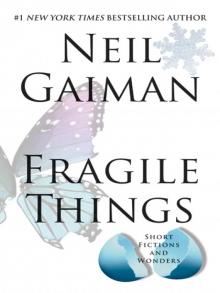 Fragile Things
Fragile Things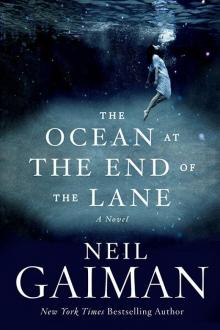 The Ocean at the End of the Lane: A Novel
The Ocean at the End of the Lane: A Novel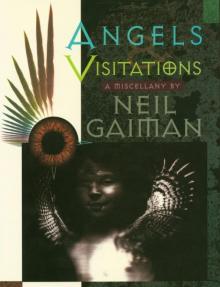 Angels and Visitations
Angels and Visitations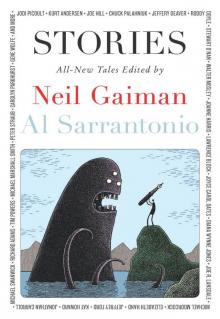 Stories: All-New Tales ngss-1
Stories: All-New Tales ngss-1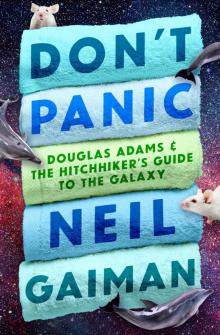 Don't Panic
Don't Panic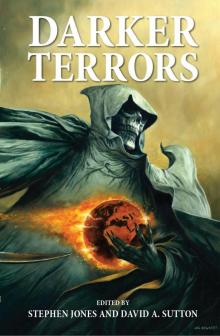 Darker Terrors
Darker Terrors Neil Gaiman Young Readers' Collection
Neil Gaiman Young Readers' Collection A Study In Emerald
A Study In Emerald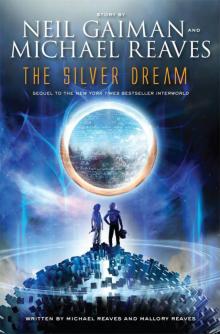 The Silver Dream: An InterWorld Novel
The Silver Dream: An InterWorld Novel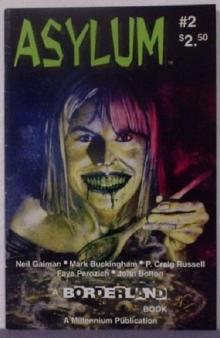 Feeders and Eaters
Feeders and Eaters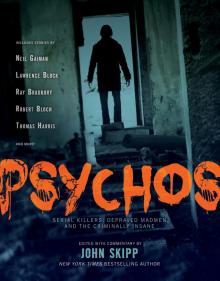 Psychos
Psychos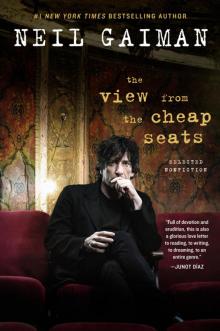 The View from the Cheap Seats
The View from the Cheap Seats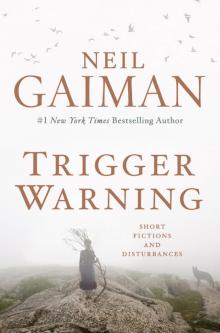 Trigger Warning
Trigger Warning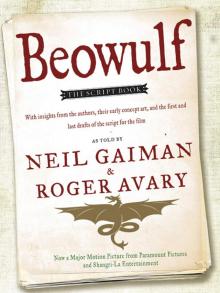 Beowulf
Beowulf Nessun Dove
Nessun Dove Doctor Who: Nothing O'Clock: Eleventh Doctor: 50th Anniversary
Doctor Who: Nothing O'Clock: Eleventh Doctor: 50th Anniversary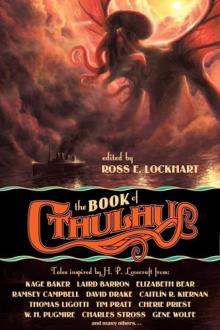 The Book of Cthulhu
The Book of Cthulhu